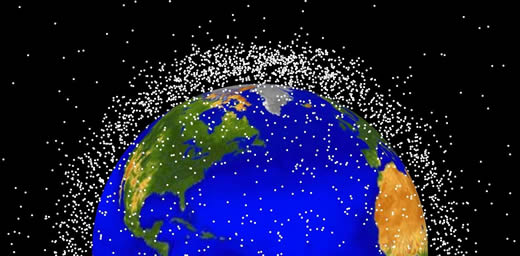
Tens of thousands of small man-made objects known as ‘space junk’ are orbiting the earth, posing significant hazard to satellites, the International Space Station and other space hardware. Some objects are debris that separated from spacecraft in orbit while others are complete satellites that have ended their life and maintained in ‘parking’ orbit around earth.
While the U.S. is tracking space objects 10 cm or larger since the 1960s, the need for better tracking of space debris became critical after the February 10th, 2009 collision of a U.S. Iridium communications satellite and a Russian Cosmos 2251 communications satellite, which created hundreds more pieces of debris flying in low-earth orbit.

“The 2009 collision of an operational communications satellite with a defunct satellite illustrates the real risk space debris poses to both our manned and unmanned space missions,” said John Morse, director of Lockheed Martin’s Space Fence program. “Space situational awareness is a national security priority and Space Fence will greatly enhance our ability to track and catalog orbiting objects which number in the tens of thousands.”
This week the Raytheon Company, Integrated Defense Systems and Lockheed Martin Corporation, Mission Systems & Sensors have received two competitive orders worth $107 million each, for preliminary design of the Space Fence Program. Through this phase, the two teams will continue development, to reduce total program risk through the development of a preliminary system design with mature technologies that meet or exceed Technology Readiness Level (TRL) 6 and Manufacturing Readiness Level 6. Both companies should complete preliminary design, performance analysis and prototype evaluation by the summer of 2012. The follow-on production contract could be valued up to $3.5 billion and bring the system to operational capability by 2015.
The new system will offer much higher resolution, operating multiple radars transmitting in higher frequencies (S-Band), capable to detect and track very small objects in low Earth orbit. Current space tracking radars developed in the 1960s are operating in the lower VHF band. In addition to continuous tracking, the new system will be able to focus on high priority assets, alerting the space station, or other critical space assets in advance on potential collision with space debris. The new system will maintain interoperability with the current fence, to ensure uninterrupted transition to the new capability later in the decade.
















